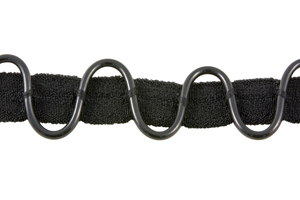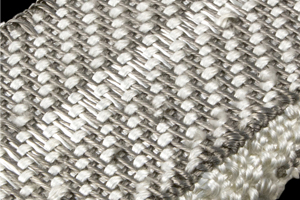As electronics continue to shrink, becoming simultaneously more compact and powerful, they’re being used in an increasingly diverse range of products and devices.
 In people’s everyday lives, this is most apparent in the Internet of Things (IoT) — the interconnection of devices and products via the internet that allow them to “communicate” with each other through the sending and receiving of data. Home appliances, thermostats, light bulbs, remotes, home security systems, and even clothing can now all be embedded with electronics and software allowing them to collect and exchange data. In hospitals, for example, “smart textiles” in clothing may be used to monitor patients’ vital signs.
In people’s everyday lives, this is most apparent in the Internet of Things (IoT) — the interconnection of devices and products via the internet that allow them to “communicate” with each other through the sending and receiving of data. Home appliances, thermostats, light bulbs, remotes, home security systems, and even clothing can now all be embedded with electronics and software allowing them to collect and exchange data. In hospitals, for example, “smart textiles” in clothing may be used to monitor patients’ vital signs.
To meet manufacturers and consumers’ shifting needs, Bally Ribbon Mills (BRM) is proud to offer our proprietary E-WEBBINGS®, an e-textile product base created by combining non-conductive fibers and specialized conductive elements. These products serve as the foundation layer to which electronic intercommunicative technology is integrated directly. E-WEBBINGS® are specifically designed to serve as a customizable base for a wide range of smart textile applications within the IoT.
Allowing for smaller final product size, lower weight, optimal user comfort, and significant cost savings, these smart textiles offer a range of benefits. But how do E-WEBBINGS® work, and how are they designed?
Download E-WEBBINGS®: Narrow Woven Fabrics for the IoT Technology Sector
E-WEBBINGS® Design, Components, and Purposes
Before beginning work on designing and customizing E-WEBBINGS®, our engineers take the time to thoroughly understand the purpose and specific requirements of the end device, and we work closely with our clients throughout each step of the process to ensure all needs are met.
Every component and factor that goes into an E-WEBBINGS® textile is thoughtfully and carefully chosen, since each piece needs to work together seamlessly — the conductor, the base webbing, the power source, and the sensor. Often, choosing to work with one type of component necessitates the use of another. For example, if a sensor requires a robust power source, a larger wire may need to be used as the conductor. And, in this case, the webbing would then need to be thick enough to reliably protect and carry the wire.

Conductors
Conductive fibers or wires can be woven into the E-WEBBINGS® fabric itself. This allows for the transmission of power and information, without the need for additional wiring in the final component. This also helps cut down on the manufacturer’s bill of materials and allows for a simplified, streamlined end product. Various options are available for conductor type; the best fit will depend on the type of sensor used or specific power requirements.
Sensors
Options are virtually limitless for the number and types of sensors used, but decisions are typically made depending on where within the product the textile structure is located, and what types of information and data it needs to measure. Also, the natural properties of weaving can benefit certain sensors, depending on their size and shape, as certain weaves are better-suited to certain attachments and types of sewing.
Learn More
To learn more about E-WEBBINGS® from Bally Ribbon Mills or to discuss your next project with one of our experts, reach out to the team today.






